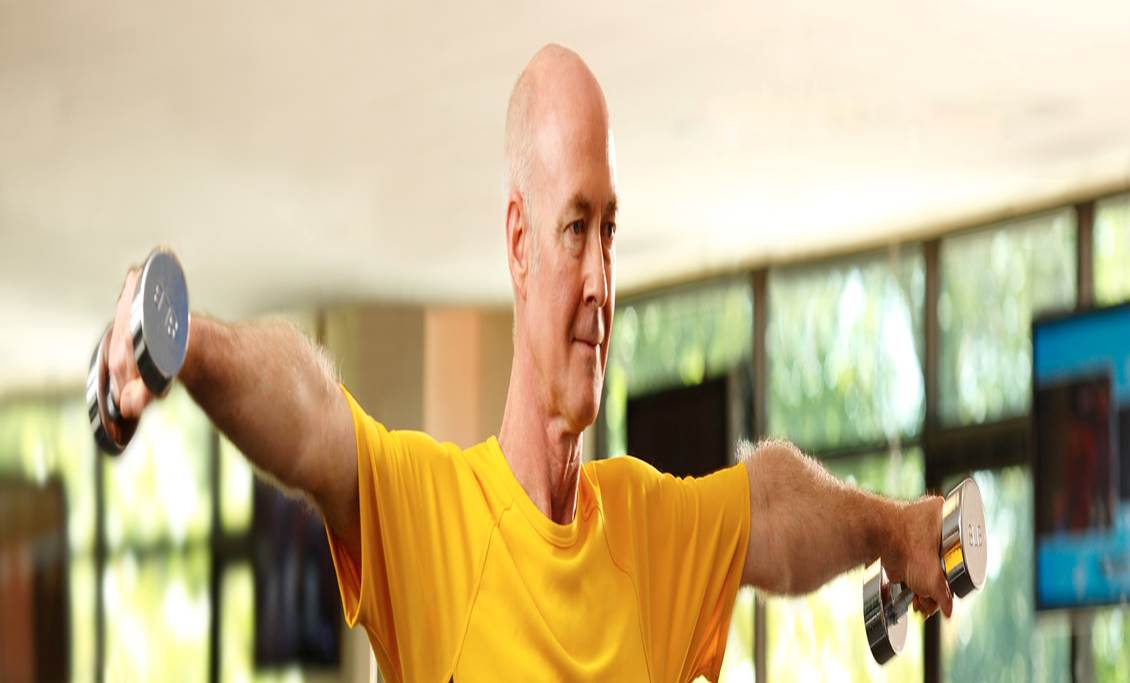
Five Mobility Exercises to Keep Your Muscles Moving
By Kaiser Permanente
Do your muscles feel stiff after sitting? Do you wish some basic activities were easier, like bending or jogging? Mobility may be your problem. When you don’t move your body often, your muscles can get tight, affecting your ability to move freely.
"Think of a muscle like a rubber band. It becomes stiff if it’s not used," says Andy Gallardo, a certified personal trainer and director of employee fitness at Kaiser Permanente in Southern California.
This loss of mobility can make you more prone to injury, like falls or muscle strains.
"That stiffness makes the muscle less able to move through its full range of motion," says Gallardo. "This is a little different from flexibility, which is a muscle’s ability to stretch. Mobility and flexibility work together to allow you to move without help."
Mobility loss may seem like a part of aging — but it doesn’t have to be. The goal is to keep your muscles moving so they can work without pain or strain. And it doesn’t have to be strenuous.
What causes mobility loss?
Too much sitting is one of the main causes of mobility loss — whether it’s working at a desk or taking long commutes.
"Sitting is terrible for mobility and flexibility," says Gallardo. "If you spend all day sitting, you’ll feel stiff and sore when you finally get up. You’re becoming that stiff rubber band because your muscles haven’t been activated."
When your leg muscles get tight from sitting, your hip and lower back muscles then have to compensate. Gallardo says the effect is like working around a broken bone or sprain.
"If someone has a leg in a cast, they’ll change how they walk to get around. This will put strain on their other muscles, and can turn into injury on the other side of the body," he says.
Easy mobility exercises
Because we lose muscle mass as we age, taking care of our mobility becomes more important every year. Doing simple exercises can help keep our muscles mobile and flexible at any age.
And the exercises don’t have to be hard. Just getting more movement into your day will benefit your health and mobility. You can try:
- Passive stretches: Simple, static movements can stretch the muscles and improve mobility. You can often do them anywhere throughout the day.
- Dynamic stretches: These types of stretches are good for putting muscles through their full range of motion. Dynamic stretches aren’t static — instead you’re moving through a stretch. Many dynamic stretches can be done at home, like a walking lunge or certain types of yoga poses .
- Bodyweight exercises: Strength training can help prepare your muscles for tougher activities. Stretch bands and Pilates are other great options.
- Going outside: Exploring your neighborhood or just walking your dog can also help get blood and oxygen to your muscles.
- Foam rolling: Doing this type of self-massage before working out or stretching can help increase blood flow and your range of motion.
In general, the more you can get up and do gentle exercises throughout the day, the better. But if you’re ever in pain or have a specific mobility concern, it’s best to talk with your doctor.
How often should you do mobility exercises?
If you’re new to regular exercise, you can ease into it with a few simple stretches each day.
"One of my favorites is the good morning stretch," Gallardo says. "Stand up and raise your hands up in the air as you arch your back and slightly lean backward. Also, daily neck stretches, and shoulder movements are important. For the torso, just swing your arms as you twist back in forth like when you were a kid. As you gain more mobility, you can take those stretches a little longer and a little deeper."
If you work from home or are entering retirement, it becomes more important to avoid sedentary habits. Easy movement exercises can help you avoid injury and lead a happier, more active life.
For more inspiration and motivation, you can check out a variety of fitness deals . - Kaiser Permanente

